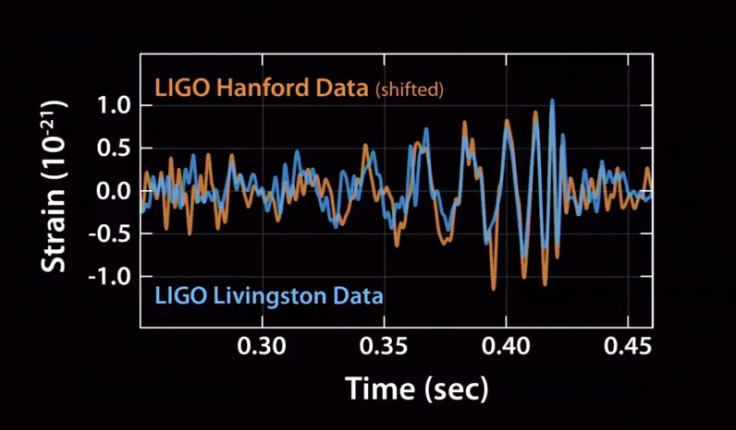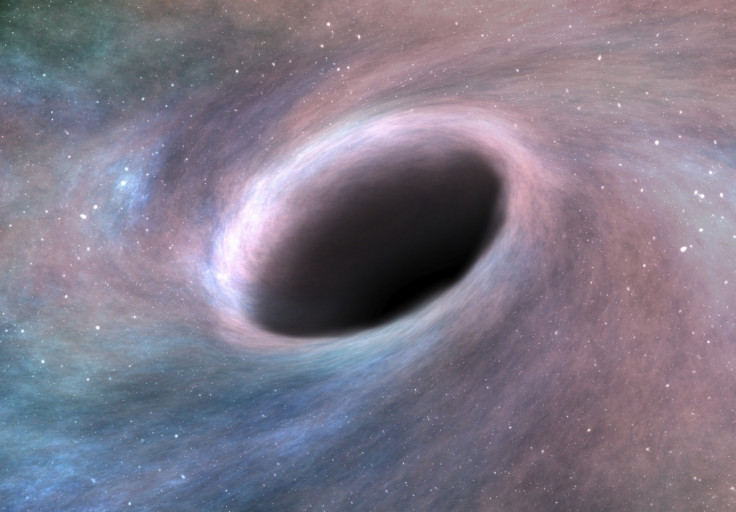Gravitational wave echoes might have just caused Einstein's general theory of relativity to break down
Discovery could lead to a whole new way of understanding black holes and their event horizons.
Physicists may have found evidence of echoes in the gravitational waves emanating from two colliding black holes. If confirmed, the discovery would show Einstein's general theory of relativity breaks down at the event horizon – the edge of a black hole that serves as the point of no return.
There are three different types of black hole, the most common being stellar black holes. These form when the centre of massive star collapses in on itself. It then becomes a region in space that has such a strong gravitational force that nothing – not even light – is able to escape.
At the centre is a gravitational singularity. This is a one-dimensional point where density and gravity become infinite and the laws of physics no longer exist. What happens at the black hole boundary – the event horizon – is not known, but several theories have been put forward.
Earlier this year, scientists announced the discovery of gravitational waves – ripples in the fabric of spacetime first predicted by Einstein 100 years ago. The waves are generated by massive accelerating objects in space – like black holes – and scientists can trace them back to their origin.

Using the Laser Interferometer Gravitational-Wave Observatory (LIGO), scientists identified gravitational waves from two colliding black holes. Since then, they have observed three gravitational wave events.
Using the LIGO data, a team of scientists has now – very tentatively – found evidence of echoes hidden within the gravitational waves. If Einstein was correct, these echoes should not exist.
Einstein's theory says nothing that crosses an event horizon can exist, meaning there cannot be anything (any matter) at its edge. This is at odds with quantum theory, which says information cannot completely disappear – that information must be somehow left behind, even if it falls into a black hole. This physics problem is known as the information paradox. It has led some scientists to predict event horizons to have some sort of structure, complete with unknown particles (Stephen Hawking, for example, suggests soft photons).

In a paper published on the preprint server arxiv.org, scientists led by Jahed Abedi, from the Sharif University of Technology, looked for echoes within the gravitational waves. If the edges of black are made up of something, then they would act as a hall of mirrors for the waves, bouncing them around a bit before they leave and creating echoes in the process.
Read more:
Stephen Hawking's soft hair theory means information could be retrieved from black holes
Stephen Hawking and information paradox: Black holes could be passages to other universes
If Earth hit the surface of a black hole 'it would become a hologram copy and continue to exist'
Using a mathematical model, the team calculated at what times after the initial gravitational wave these echoes should emerge - 0.1, 0.2 and 0.3 seconds later. They then looked at the LIGO data and found this is exactly what happened in all three events detected, Nature magazine reports.
But their findings are in no way certain – the level far below the error margin normally required for physics papers. The "echoes" could just be a statistical fluke. Physicists will now analyse and comment on the study before it goes to peer review for publishing.
Should their findings stand up, however, it would indicate Einstein's general theory of relativity breaks down at the edge of black holes. Furthermore, they will be able to find out for sure when the new and improved LIGO resumes its search for gravitational waves.
Lead research Niayesh Afshordi told Nature: "The good thing is that new LIGO data with improved sensitivity will be coming in, so we should be able to confirm this or rule it out within the next two years."
© Copyright IBTimes 2025. All rights reserved.






















